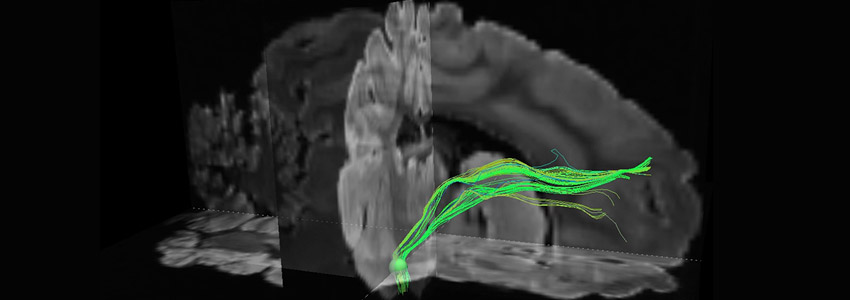Projects and Experimental Approaches
The Neurophysiology of Traumatic Brain Injury
Traumatic Brain Injury, including mild TBI (concussion), is difficult to treat and many of the mechanisms underlying continued symptoms are unknown. We are investigating the changes post injury in the limbic and cortical regions in order to understand what leads to post–traumatic disruption of cognition. We are also beginning to examine the interactions between many regions of the brain after injury, including the hippocampus, the prefrontal cortex, and the amygdala. These may be disrupted post–injury, leading to susceptibility to disorders such as PTSD and sleep disruption.
Post–traumatic epilepsy is also a major focus of the lab, as we have discovered hyperexcitability in the hippocampus one week post injury, and we are investigating how this process resolves over time and may contribute to lowering seizure thresholds. We are examining these aspects using multi–channel planar electrodes that can monitor many layers of hippocampus or cortex simultaneously so that we can understand changes in the circuitry post injury.
Neuromodulation of the Limbic System
The limbic system has recently become a target for neuromodulation for both psychiatric and neurodegenerative disease. We are beginning to investigate next generation neuromodulatory techniques in order to better understand how treatments such as Deep Brain Stimulation (DBS) affect this circuitry. These include optogenetic techniques, including the selective stimulation of white matter pathways in the brain. We hope to develop these techniques to treat disorders of the limbic system as well as dysfunction associated with TBI.
High Density Awake Behaving Wireless Neurophysiology
In order to develop better tools for examining circuitry changes in translational models, we have been collaborating with a number of electrode and hardware developers to develop better tools for small and large animal recordings, particularly high-density laminar recordings in awake behaving animals using wireless technology. This has resulted in a new generation of laminar silicon probes that can be utilized in very deep large animal structures. In addition, we have developed technology and interfaces that allow us to record from awake behaving large animals without tethers. This new generation of probes will allow for a greater understanding of how complex behavior is coded in the brain across regions, as well as how it is disrupted.
Characterization of Human Neurons and single–cell mRNA
We are fortunate to have access to cortical tissue from resections during surgery. As part of a collaboration with the Eberwine lab via a UO1 mechanism, we are examining the phenotype of neurons via intracellular recordings as the slices are simultaneously utilized for single cell mRNA expression. The goal of that project is to categorize the mRNA expression of human excitable cells in order to gain an understanding of the inherent variability in these cells in humans, and how disease affects this process. We will utilize this tissue to also gain an understanding of how cortical processing is affected in different disorders via mRNA expression and electrophysiological differences.
Network Interactions in the Striatum
We also utilize computational models in order to examine how many cells interact at the same time, since current techniques are not capable of recording from hundreds of cells simultaneously. We currently have a network of 3000 cells of the striatum that has allowed us to view the effects of different types of inhibition on the inputs arriving from other limbic structures, and the effect on the network function.
Tissue Engineering Approaches to Brain and Peripheral Nerve Repair
In collaboration with the Smith Lab and the Cullen Lab, we are working on new methods to repair neural circuitry in the brain, as well as regenerative medicine approaches to the peripheral nervous system. We are also working on integrating both central and peripheral signals with prosthetic interfaces to better control these devices using more natural signals than currently available.

